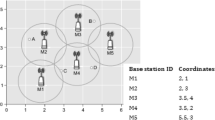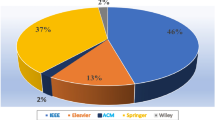Abstract
Congestion control in today’s Internet is an important issue. Congestion control algorithms have been extensively studied for managing the traffic and maintaining the stability in the network. In traffic management system, queuing plays an important role. This paper presents a comparison of three queuing mechanisms, namely Drop-tail, random early detection (RED) and nonlinear random early detection (NLRED) in wired network on the basis of different performance metrics such as end-to-end delay, throughput, packet drop and packet delivery ratio using NS2 simulator. The simulation results show that in high congestion, NLRED performs best while in low cohesive network Droptail gives good result. Also, we analyzed these queuing mechanisms in real audio traffic; again, all the experiments show that in congested network NLRED and RED are better while in low congested network Drop-tail is better because in heavy congested network congestion avoidance mechanism will help the network to achieve better performance. But in low congested network, the unnecessary computation avoidance mechanisms will degrade the network performance. However, if parameters are set effectively in RED, then it will be the best queuing mechanism for that particular network.
















Similar content being viewed by others
References
Abdel-jaber H (2015) Performance study of active queue management methods: adaptive GRED, REDD, and GRED-linear analytical model. J King Saud Univ Comput Inform Sci 27(4):416–429
Chen J, Hu C, Ji Z (2010) An improved ARED algorithm for congestion control of network transmission. Math Probl Eng 2010:329035. doi:10.1155/2010/329035
Chhabra K, Kshirsagar M, Zadgaonkar AS (2013) Effective congestion indication for performance improvement of random early detection. Int J Innov Technol Explor Eng 3:35–38
Huebner F (2004) Performance, quality of service, and control of next-generation communication networks ii. In: Proceedings of SPIE international society for optical engineering
Hui WANG, Xiao-Hui LIN, Kai-Yu ZHOU, Nin XIE, Hui LI (2009) On the scalable fairness and efficient active queue management 399 of RED. Int J Commun Netw Syst Sci 2(01):73–83. doi:10.4236/ijcns.2009.21009
Jain T, Annappa B, Tahiliani MP (2014). Performance evaluation of CoDel for active queue management in wired-cum-wireless networks. In: 2014 fourth international conference on advanced computing and communication technologies (ACCT). IEEE, pp 381–385
Jiang K, Wang X, Xi Y (2004) Nonlinear analysis of RED—a comparative study. Chaos Solitons Fractals 21(5):1153–1162
Joshi M, Mansata A, Talauliker S, Beard C (2005) Design and analysis of multi-level active queue management mechanisms for emergency traffic. Comput Commun 28(2):162–173
Katiyar V, Jain AC (2014) A survey on red and some it’s varients incongestioncontrol mechanism. Int J Eng Manage Res 4(4):184–188
Kaur K, Kaur N, Singh G (2013) Performance comparison of queuing algorithms: a review. IOSR J Electron Commun Eng (IOSR- JECE) 8(4):46–48
Khademi N, Othman M (2010) Least attained service queue management for ns-2 network simulator. In: 2010 second international conference on computer research and development. IEEE, pp 317–321
Mohamed MHE (2010) Some active queue management methods for controlling packet queueing delay. Design and performance evaluation of some new versions of active queue management schemes for controlling packet queueing delay in a buffer to satisfy quality of service requirements for real-time multimedia applications. Doctoral dissertation, University of Bradford
Soni H, Mishra PK (2013) Reducing packet loss in active queue management. Int J Comput Appl 81(16):25–28
Xu Q, Sun J (2014) A simple active queue management based on the prediction of the packet arrival rate. J Netw Comput Appl 42:12–20
Yahia M, Bíró J (2005) Admission control for elastic traffic using RED and/or droptail queues. In Proceedings of the 8th international conference on telecommunications, 2005. ConTEL 2005, vol 2. IEEE, pp 391–396
Zaheer H, Pant M (2015) A differential evolution approach for solving integer programming problems. In: Proceedings of fourth international conference on soft computing for problem solving. Springer, India, pp 409–420
Zaheer H, Pant M, Kumar S, Monakhov O, Monakhova E, Deep K (2014) A new guiding force strategy for differential evolution. Int J Syst Assur Eng Manag. doi:10.1007/s13198-014-0322-6
Zhou K, Yeung KL, Li VO (2006) Nonlinear RED: a simple yet efficient active queue management scheme. Comput Netw 50(18):3784–3794
Author information
Authors and Affiliations
Corresponding author
Rights and permissions
About this article
Cite this article
Rastogi, S., Zaheer, H. Comparative analysis of queuing mechanisms: Droptail, RED and NLRED. Soc. Netw. Anal. Min. 6, 70 (2016). https://doi.org/10.1007/s13278-016-0382-5
Received:
Revised:
Accepted:
Published:
DOI: https://doi.org/10.1007/s13278-016-0382-5




